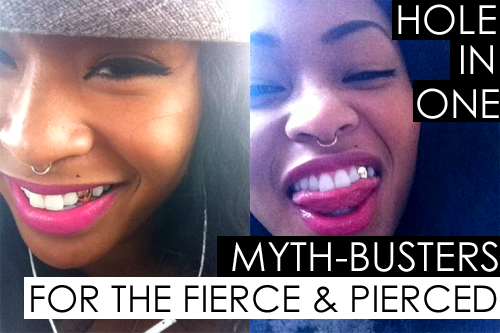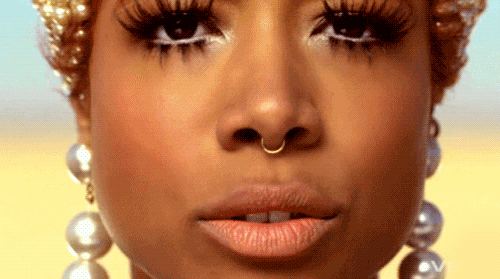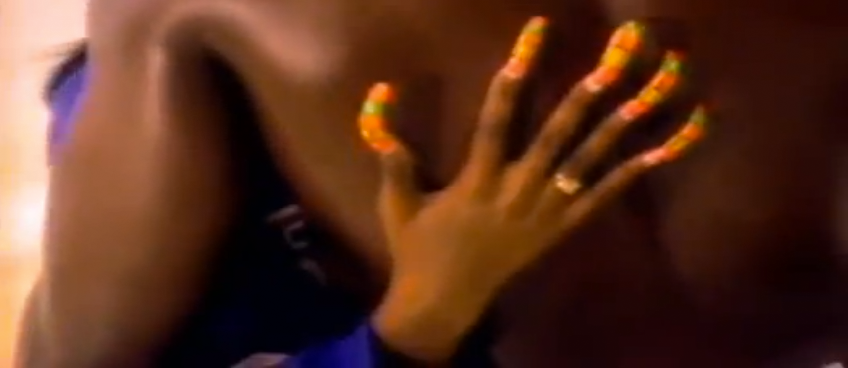
“Belly-flop”: You must remove your belly button ring while pregnant. FALSE.
Many women seem to be under the impression that their belly button is the portal to the womb that houses their unborn. No, ladies- that would be your birth canal. Contrary to popular belief, your stomach can not “split in two” as a result of a navel piercing. The truth is, many women keep their navel ring in for months during their pregnancy, and later remove it due to their own displeasure or because some physicians advise they do so for sterility and sanitation purposes. Further into your pregnancy, your ring may cause you to feel a strong pulling sensation as the abdomen stretches and becomes more taut- thus resulting in your discomfort. Basically, with the exception of a potential “mark-up” (more so resulting in varying skin sensitivity and proneness to scarring), it is completely safe to have a belly ring while pregnant.
“Nip-tuck”: Nipple piercings put you more at risk for breast cancer. FALSE.
No proven study has linked breast cancer to women donning nipple rings. However, one should be concerned about the probability of infection when sporting any piercing. Especially since nipple rings consist of penetrating two openings per breast (entrance hole / exit hole) , your piercing may be more susceptible to infection upon removing the ring, since depending on the person, not all holes close.
Nipple piercings increase the flow of milk during breast feeding. TRUE.
However, the term “flow” is not to be confused with
 “production” as in “lactate production.” Nipple piercings do not stop one from nursing their young, nor does it inhibit the flow and production of milk. Actually, the added punctures in your nipples may help make it easier to nurse. Removing your jewelry during feedings is acceptable, however removing and replacing your ring too often may cause added aggravation to the breast. If you choose to remove your ring as a whole, this is fine. Just remember that if you are consider re-piercing in the future, to go to a professional. A professional and experienced piercer will avoid piercing through old scar tissue and instead will create a new hole through soft flesh.
“production” as in “lactate production.” Nipple piercings do not stop one from nursing their young, nor does it inhibit the flow and production of milk. Actually, the added punctures in your nipples may help make it easier to nurse. Removing your jewelry during feedings is acceptable, however removing and replacing your ring too often may cause added aggravation to the breast. If you choose to remove your ring as a whole, this is fine. Just remember that if you are consider re-piercing in the future, to go to a professional. A professional and experienced piercer will avoid piercing through old scar tissue and instead will create a new hole through soft flesh.“Tongue-Tied”: Tongue piercings can cause bad breath. TRUE.
Bad breath is a result of bacteria growing and becoming trapped between the tongue ring and crevices. As germs flourish, infection may occur requiring the attention of a dentist. Dental hygiene can be a problem because brushing and tongue scrapping recommended by most dentists are not possible with the ring in place. To promote fresh breath and reduce the risk of infection, it is necessary to remove the ring and barbell, then sterilize it before placing it back in. [X]
“Nosy Girl” : Septum Piercings are problematic for those with sinus issues: FALSE.
Piercing the septum is a trend that is growing steadily in many demographic groups. Once reserved for the grunge and rocker-chic, the septum ring is one that has crossed over into the r&b and soul community (see Janet Jackson circa “The Velvet Rope”). It has been said that piercing this particular area can run fairly smooth when done by a licensed professional. The pain has said to been as minimal as plucking a nostril hair, and healing has been estimated to only take about a week.The septum piercing is no where near close enough to the nasal cavity to effect your sinuses, however, constant blowing of the nose can irritate the piercing, thus making the healing process a pain. The initial soreness and swelling can cause some bleeding, as well.
There is a “right” way in going about getting your nose pierced: TRUE and FALSE.
It has been rumored that the side in which you pierce your nose is in actuality socially rooted to your sexual preference. The reality is, there is no politically correct way to go about piercing your nose. In many cultures, nose jewelry is considered to be a highly regarded accessory that accentuates the feature of the face that many believe to be the most prominent and attractive. Nose piercings originated in Africa, India, and the Mid-east. However, the left nostril is the most common to be pierced in India, because in Ayuvedra (Indian medicine), the left side is associated with the female reproductive organs, thus it is believed that piercing this side promotes fertility and lessens the pain of child bearing and menstrual cramps.
Treatment and Aftercare Post-Piercing:
Nose/Facial: Many people enjoy the use of lavender essential oil when caring for facial piercings and insist that it reduces scar tissue. It will lubricate your piercing and prevent its tightening.
All Piercings: Aside from going to a licensed professional who only uses sterilized instruments and practices under sanitary conditions, diligent and thorough aftercare following your piercing can minimize all potential infections: Read here: caring for your piercings.







